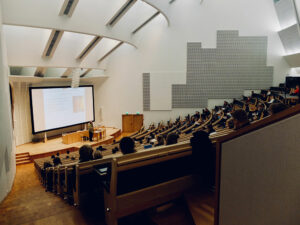
Funding Sources for Digital Learning

There is a steadily rising demand for bandwidth in schools. Digital learning goals are as high as 1:1 campus wide in some areas. Other schools might only use digital learning in the classroom, but request higher bandwidth for online testing, distance learning, educational videos or other educational applications. Factor in teachers’ WiFi needs for tasks such as reporting; concurrent use from personal smartphones or tablets; administrative needs; security cameras; and any Internet of Things (IoT) devices, which could be anything from locks to thermostats, and it isn’t a surprise that many schools need to upgrade network strength.
The increasing demand for bandwidth might be growing exponentially faster than budget allocation. Technology should never be a limiting factor in education, security or efficiency. To that end, here are several ways to receive funding support for technological goals:
1. E-rate
The official name of this FCC program is the Schools and Libraries Program. It provides reimbursement of up to 90% to help eligible schools and libraries in the U.S. obtain affordable telecommunications and Internet. $3.9 billion is allotted annually to help schools upgrade their internal networks and implement WiFi in every classroom.
Covered products and services are organized into three different sections:
- Category One: Data transmission services and internet access, and voice services
- Category Two: Internal connections, managed internal broadband services, and basic maintenance of internal connections
- Miscellaneous
To apply to the program, schools first identify needed services and submit a request for competitive bids to the Universal Service Administrative Company (USAC), a private entity that managed the E-Rate programs for the FCC. USAC shares the requests on its website for vendors to place bids. The school then selects its preferred vendor(s) and applies to the USAC for approval. Next, the USAC issues funding commitments to eligible applicants. After a vendor provides its services, either the vendor or the applicant submits a request to the USAC for reimbursement.
In 2014, the program was amended to include additional funding to match state funding for eligible special construction charges. These charges cover the design, engineering, project management and construction costs. If a state provides funding, the E-rate program will increase an applicant’s discount rate for these charges up to an additional ten percent to match the state funding on a one-to-one dollar basis.
2. U.S. Department of Education
The Department of Education lists various funding opportunities on its website. It includes grant titles, eligibility and funding information, due dates and applications. An example is the Educational Technology, Media, and Materials for Individuals with Disabilities Grant. Other federal grants may be found at Grants.gov
3. GetEdFunding
In its own words, GetEdFunding is a “grant-finding resource, dedicated to helping educators, schools, and institutions identify the funding they need in budget-tight times.” The resource is free and curates thousands of grants for public and private schools preK-12, as well as higher education institutions and nonprofit organizations offering educational programs. Funding opportunities came from federal, state, regional and community sources.
Use these resources to create schools with the updated technology that meets each student’s educational and security needs. Look to Wyebot, the leader in WiFi Assurance, for Category 2 E-rate projects.

